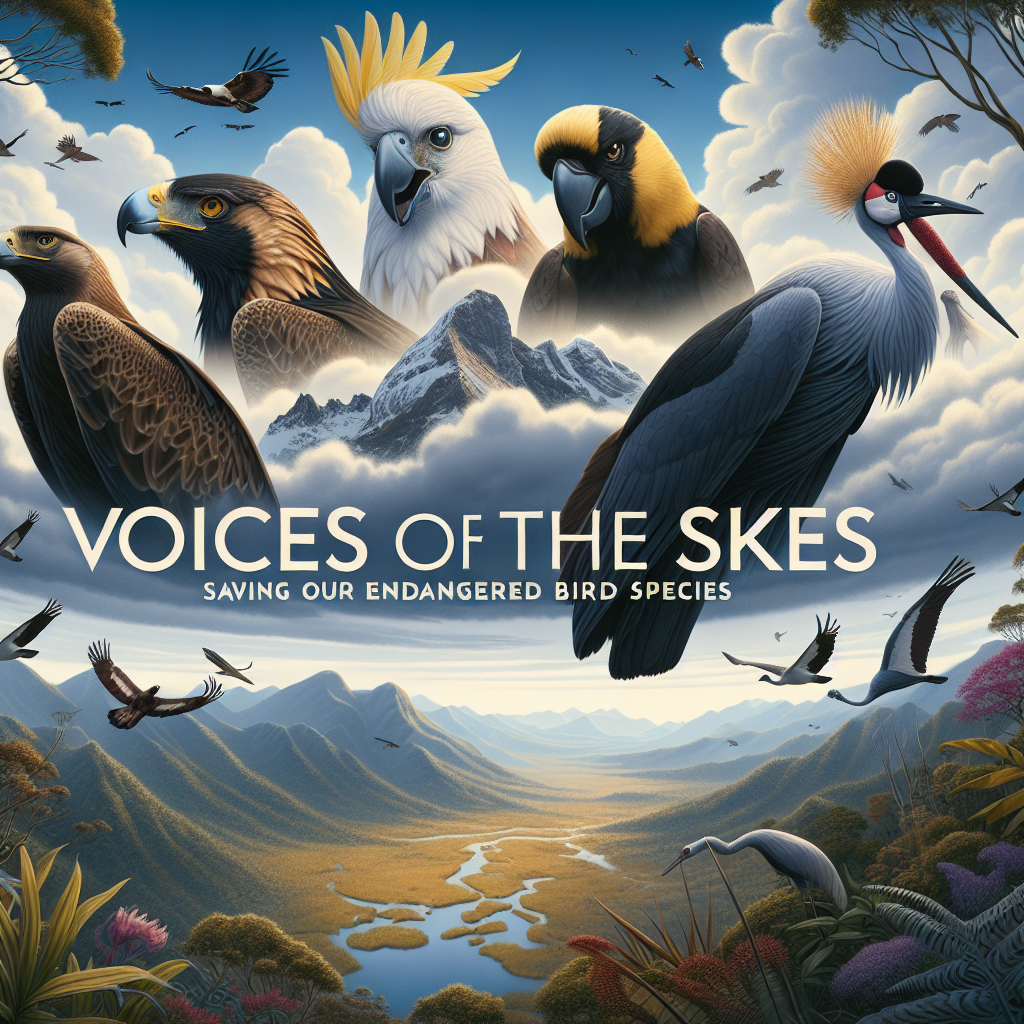Voices of the Skies: Saving Our Endangered Bird Species

Birds have long been celebrated as symbols of freedom, beauty, and nature’s intricate balance. Their melodious songs and stunning aerial displays captivate the hearts of observers and foster connections to the environment. However, a troubling phenomenon threatens the survival of many avian species worldwide: habitat loss, climate change, pollution, and human encroachment are just a few of the challenges these creatures face. In this era of ecological crisis, the call to action is urgent: we must amplify the voices of the skies and commit to safeguarding our endangered bird species.
The Current State of Bird Populations
According to the International Union for Conservation of Nature (IUCN), nearly 13% of the world’s 11,000 bird species are currently listed as threatened or endangered. This statistic may serve as a wake-up call. Species such as the California condor, the Spix’s macaw, and the Ivory-billed woodpecker are among those at risk of extinction. The loss of these birds would not only diminish our planet’s biodiversity but also impact ecosystems that rely on birds for pollination, pest control, and seed dispersal.
Major Threats to Bird Species
-
Habitat Destruction: Urbanization, agriculture, and deforestation lead to the destruction of vital habitats, forcing birds to either adapt or perish. Wetlands, forests, and grasslands—crucial for the survival of numerous species—are constantly under threat from human activities.
-
Climate Change: Global warming impedes migratory patterns, alters breeding seasons, and affects food availability for birds. Species already struggling to survive are finding it increasingly difficult in a rapidly changing climate.
-
Pollution: Chemicals from pesticides, litter, and oil spills contribute to the declining health of avian populations. Birds are often at the top of the food chain, making them vulnerable to bioaccumulation of toxins.
- Invasive Species: The introduction of non-native species, whether intentional or accidental, can lead to increased competition for food and nesting sites, ultimately pushing native bird populations to the brink.
The Importance of Bird Conservation
Birds are a vital part of our ecosystems. They play essential roles in pollination, seed dispersal, and the control of insect populations. The loss of any bird species can cascade through ecosystems, destabilizing the intricate relationships among flora and fauna. Conserving bird populations thus contributes to the health of our ecosystems and reflects the overall health of our planet.
Community Engagement and Conservation Initiatives
In recent years, a growing movement has emerged around bird conservation. Community-driven initiatives and organizations are working tirelessly to protect and restore habitats, conduct research, and raise awareness about the plight of endangered birds.
-
Habitat Restoration: Local conservation groups have initiated restoration projects aimed at reviving habitats that have been damaged by human intervention. These efforts can involve reforesting areas, creating wetlands, and establishing protected natural reserves.
-
Birdwatching and Citizen Science: Birdwatching has become a popular pastime, contributing to data collection essential for bird conservation efforts. Programs like the Audubon Society’s Christmas Bird Count and eBird allow amateur birdwatchers to contribute valuable information about bird populations, distribution, and behavior.
-
Education and Awareness Campaigns: Raising awareness about the challenges faced by bird species is critical. Schools, local organizations, and social media campaigns are helping to engage the public and foster a sense of responsibility toward our feathered friends.
- Legislative Action: Advocating for policy changes at the local, national, and international levels is vital for the protection of endangered birds. The Migratory Bird Treaty Act and the Endangered Species Act are examples of legislative measures that provide essential protections, but they require public support and vigilance to remain effective.
Ways You Can Help
Every individual can contribute to the protection of birds and their habitats. Here are some actionable steps you can take:
- Create Bird-Friendly Spaces: Plant native flora in your gardens, install bird feeders, or build birdhouses to provide safe spaces for local species.
- Support Conservation Organizations: Donate to or volunteer with organizations dedicated to bird conservation efforts.
- Reduce Pollution: Opt for eco-friendly products, reduce plastic waste, and be mindful of the chemicals you use in your home and garden.
- Educate Others: Share your knowledge about the importance of birds and the threats they face with friends and family.
Conclusion
Birds are indeed the voices of the skies, echoing the story of our planet through their songs and diverse species. It is our collective responsibility to listen to their call and act decisively to protect them from the threats that loom ahead. Only through our concerted efforts can we ensure that future generations continue to hear the melodies of these magnificent creatures. By fostering a culture of awareness, respect, and love for our avian companions, we embrace the opportunity to create a sustainable future for all living beings. Together, we can save our endangered bird species and the vital roles they play in maintaining the health of our ecosystems.